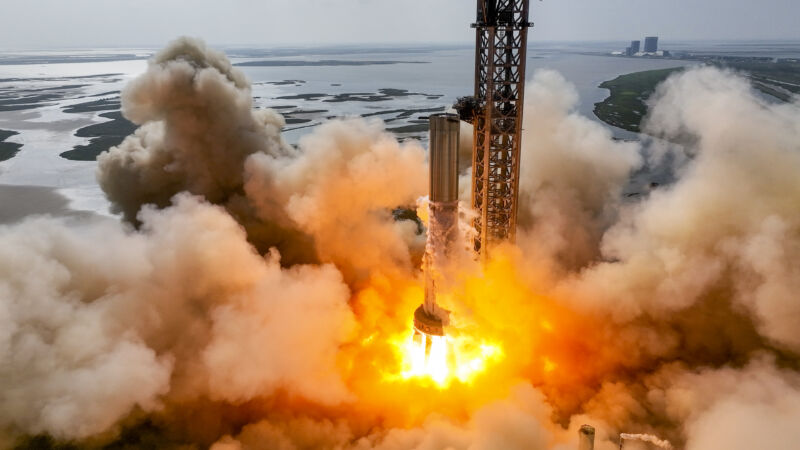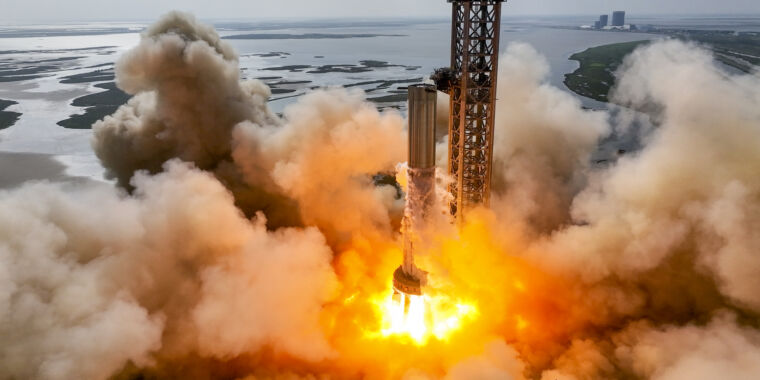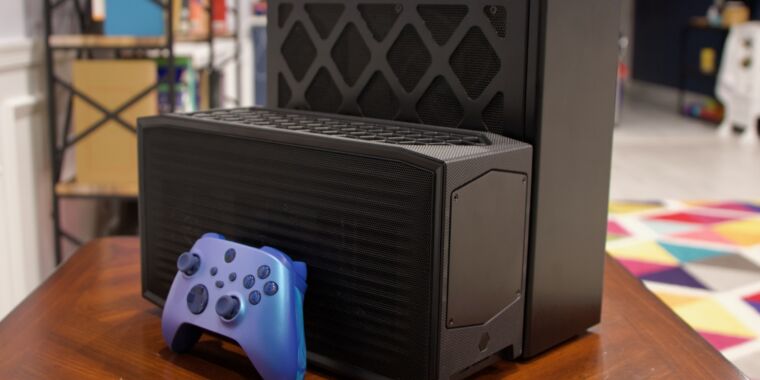
SpaceX
On Tuesday, SpaceX test-fired its Super Heavy rocket for about 12 seconds, making it the longest duration firing of the massive booster so far. The test, which ignited 11 of the 33 Raptor rocket engines, came as SpaceX continues working toward an orbital launch attempt of this Super Heavy first stage and its Starship upper stage.
Earlier this month, SpaceX fired 14 Raptor engines on this booster for a few seconds, so Tuesday’s test did not set a new record regarding the number of engines tested. However, this “long duration” firing is the longest period of time that so many Raptor engines have been fired at once.
So what happens now? The path to orbit for SpaceX and its Starship launch system is unclear. Previously, SpaceX founder Elon Musk said the next step was to fire a subset of Super Heavy’s engines for about 20 seconds to test autogenous pressurization. This method of pressurizing fuel tanks uses gases generated on board the rocket rather than a separately loaded, inert gas such as helium.
Tuesday’s test may have been a slightly shorter version of this autogenous pressurization test—12 seconds instead of 20—or it may have been something else. The company is taking an iterative design and development approach to the Starship vehicle and its Super Heavy first stage, so its test plans are fluid, not unlike the rocket’s cryogenic propellants.
In all likelihood, SpaceX still has a couple of key tests to complete before the combined Super Heavy rocket and Starship upper stage are launched from the company’s Starbase facility in South Texas. It is anticipated that SpaceX will conduct at least a short-duration test firing of all 33 Raptor engines simultaneously to gain confidence in the totality of the complex plumbing to fuel and pressurize the rocket’s propulsion system. Then the Starship upper stage will be stacked on top of Super Heavy, and the combined vehicles must complete a wet dress rehearsal.
What seems clear is that SpaceX is maturing its approach to working with the Starship architecture, as recent tests, including Tuesday’s, have ended without any obvious failures.
After completing all of its technical preparations, SpaceX must also obtain a launch license from the Federal Aviation Administration, which is in progress but has yet to be completed. While it remains theoretically possible that Starship will make its orbital launch attempt in December, there is an increasing likelihood that the test flight will slip into the early part of 2023.








